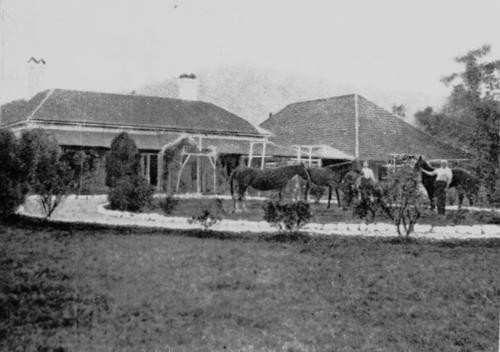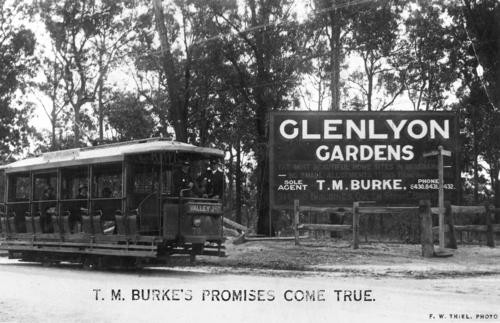The western Brisbane suburb of Ashgrove takes its name from the 200 acre Grove Estate, developed by Mr. F.F. Holmes and later subdivided, which laid the foundations for the future suburb. Records show that ash trees grew profusely in the area.
Ithaca, named by Governor Bowen, and St John's Wood are two of the localities found within Ashgrove today.
Early settlement
Settlers and early residents included Robert Little and Darby McGrath (1856); John McDougall and Joseph Grindlay (1858); William Cooksley and Alexander Bennett (1862) and Alexander Stewart (1876). Stewart's residence was called Glen Lyon House and is believed to have been constructed using South Sea Islander labour. Glen Lyon's original gateway is said to now mark the entrance to Stuartholme College.

Another early resident was Judge Harding whose property was called St. John's Wood. There is a royal connection with this property in that Prince Albert and Prince George (later King George V) stayed here when they visited Queensland. Later, when the Duke and Duchess of York visited Australia to take part in the opening of the first federal parliament, they were entertained at St. John's Wood. Street names commemorating this royal connection include Royal Parade, King Street, Sandringham Street and Prince Street. Some early business enterprises include Ozannes Dairy (1920s); the Non-Ferrous Foundry Co. (1929) and the W.C. Kerr Ltd. Quarry (1931) which now forms part of the Ashgrove golf course.
Landmarks
Some significant locations, buildings and dates include:
- Marist Bros. Monastery and Marist Bros. College – Glen Lyon was purchased by the Marist Bros in 1930 with the college being established in 1940 as a day and boarding school. The buildings were commandeered by the Australian Army during World War 2.
- St. Finbar’s Catholic Church, constructed in 1955. The church building's distinctive tower serves as a well known landmark.
- Ashgrove State School, established in 1877. The first head teacher was James Brunton Stephens, a noted early Queensland poet.
- Windsor Road Baptist Church, established in 1888. The adjacent church hall was erected in 1933
- Frank Waters Park, located in Dorrington Street was named in 1973 in honour of Frank Waters. Mr Waters was a prominent figure in the Australian Labor Party as well as a distinguished member of parliament.
- T.M. Burke Park, located at the corner of Stewart and Aloomba Roads. Mr. Burke donated the land to the Brisbane City Council in 1929 with the park eventually being named in his honour (1985).
- Waterworks Road was originally laid down in the 1860s as an access road to Enoggera and the Taylor Range area. This is now one of Brisbane's main arterial roads.
- Mt. St. Michael’s College was opened in 1925 and was originally known as Grantuly after the residence that stood on the site and housed the college. It was renamed in 1941.
- St. David’s Uniting Church was opened on 7 March 1936.
- St. Paul’s Church of England was established in 1952.
- The suburb's first post office was established on 1 January 1877 with J.B. Stephens as postmaster.
- A mail service began operating by coach between Brisbane and Ashgrove six days a week on 15 Mar 1877.
- The tramline was extended from Red Hill to Ashgrove in 1924.

Tramdrivers and passengers in a tram at Ashgrove, Brisbane, 1923. John Oxley Library, State Library of Queensland. Image 35804
Housing estates and street names
Some early housing estates in the Ashgrove area include:
- Ithaca Creek estate (1870).
- Holmesbrook Estate, adjacent to Waterworks Road (1878).
- Forest Grove Estate - four 10 acre allotments adjoining Enoggera Creek (1891).
- Glen Lyon Gardens estate comprising the area surrounding Glen Lyon House (1924).
- Holmesbrook St was named in honour of the Holmes family.
- Grove St, named after the Grove Estate.
- Fraser St named after one of F.F. Holmes' Christian names. Celia Street is named in honour of Mr. Holmes' wife, while Harry Street is after Mr. Holmes' son.
View more photographs of Ashgrove on our One Search catalogue.
Comments
Your email address will not be published.
We welcome relevant, respectful comments.